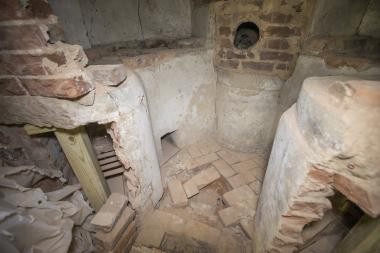Researchers and restorationists apparently uncovered a secret chemical laboratory during the renovation of the University of Virginia's Rotunda Wall, that was apparently designed by Thomas Jefferson during the 19th century.
Upon preparation before the restoration, craters were examined on the walls where researchers uncovered a chemistry hearth. According to senior historical preservation planner Brian Hogg, it was a surprise and is truly very exciting for the team.
The science classroom was well preserved and was also hidden under one of the lower floor walls during the 1850s which was also kept from being destroyed from the 1895 fire that ruined much of the interiors.
During the original Rotunda of Thomas Jefferson, chemistry classes were often held at the lower floor as the lectures were carried out from the oval room in the lower west of the room and experiments and projects at the lower east. The classes were taught by the first natural history professor of the university, John Emmet.
The area was developed by Emmet where he placed equipment such fireboxes for heat sources, one is a wood burning one and another is a coal one. The fireboxes and the student work stations are also equipped with fresh air from an underground brick pit. In total, there were five work stations that were built with stone counter tops.
During April 1823, Jefferson requested via letter to Joseph Cabell who is a member of the Board of Visitors, for the class to be transferred to the ground floor of the Routnda to gain easier access of water supply for experiments. Jefferson wrote, for the Professor of Chemistry, these experiments will constantly require to use furnaces and cannot be presented in an ordinary lecture room.
In October 1824, the Board of Visitors approved for the basement of the Rotunda to be transformed into one of the chemical labs.
Today, the Department of Chemistry is now located at McCormick Road. This new discovery of the hidden chemical hearth is an essential relic in the institutional history of the university which emphasizes how Jefferson placed importance on natural science.



























